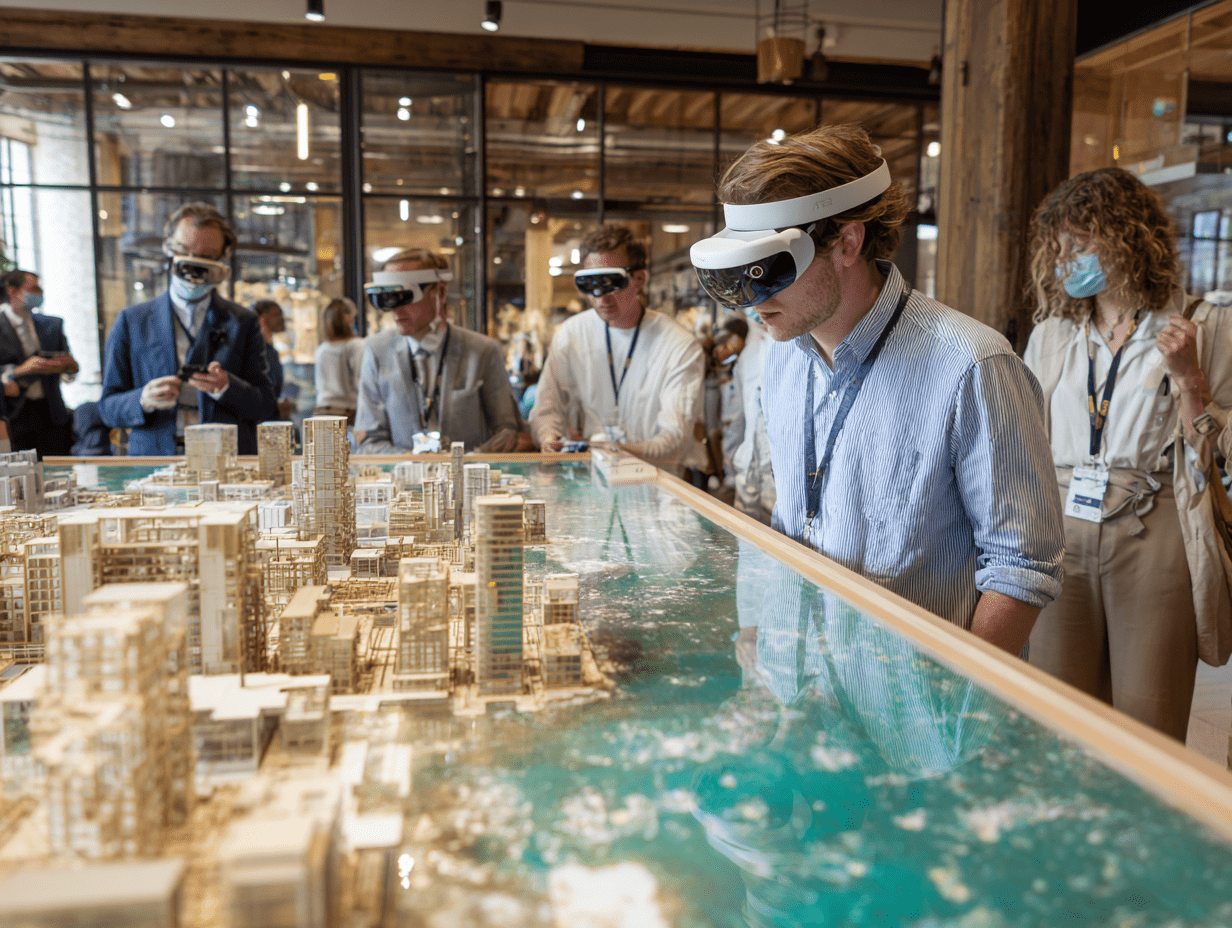- Home
- Articles
- Architectural Portfolio
- Architectral Presentation
- Inspirational Stories
- Architecture News
- Visualization
- BIM Industry
- Facade Design
- Parametric Design
- Career
- Landscape Architecture
- Construction
- Artificial Intelligence
- Sketching
- Design Softwares
- Diagrams
- Writing
- Architectural Tips
- Sustainability
- Courses
- Concept
- Technology
- History & Heritage
- Future of Architecture
- Guides & How-To
- Art & Culture
- Projects
- Interior Design
- Competitions
- Jobs
- Store
- Tools
- More
- Home
- Articles
- Architectural Portfolio
- Architectral Presentation
- Inspirational Stories
- Architecture News
- Visualization
- BIM Industry
- Facade Design
- Parametric Design
- Career
- Landscape Architecture
- Construction
- Artificial Intelligence
- Sketching
- Design Softwares
- Diagrams
- Writing
- Architectural Tips
- Sustainability
- Courses
- Concept
- Technology
- History & Heritage
- Future of Architecture
- Guides & How-To
- Art & Culture
- Projects
- Interior Design
- Competitions
- Jobs
- Store
- Tools
- More
Exploring Metaverse Architecture: Innovations & Future Trends in Digital Design
Explore the groundbreaking innovations in metaverse architecture as digital design transcends the limitations of physical reality. Discover how virtual spaces are reshaping societal interactions and fostering immersive experiences.

As we venture deeper into the digital age, the metaverse emerges as a groundbreaking frontier, reshaping how we perceive space and interaction. This virtual universe isn’t just a playground for gamers; it’s a dynamic realm where architecture plays a pivotal role. Our understanding of traditional architecture is being challenged and reimagined, as architects and designers explore innovative ways to construct these digital landscapes.
In the metaverse, the constraints of physical reality dissolve, allowing for limitless creativity and experimentation. We’re witnessing a surge of architectural innovations that blend technology and artistry, creating immersive environments that captivate users worldwide. From virtual skyscrapers to interactive urban spaces, the possibilities are endless. As we look to the future, it’s clear that the metaverse will continue to influence architectural trends, pushing the boundaries of design and redefining our concept of space.

Table of Contents
ToggleUnderstanding the Metaverse
The metaverse represents a collective virtual shared space. It’s created by the convergence of virtually enhanced physical realms and persistent digital spaces. Incorporating components from augmented reality (AR) and virtual reality (VR), this digital universe stretches beyond singular technologies into a vast interconnected ecosystem.
In this realm, users interact as avatars. These avatars navigate through environments that mimic reality or present entirely new worlds. The social, economic, and cultural interactions in the metaverse mirror those of the physical world, yet offer limitless possibilities due to the absence of traditional constraints.
Moreover, the metaverse functions through decentralized technologies. Leveraging blockchain, it ensures secure, transparent transactions and ownership of digital assets such as non-fungible tokens (NFTs). This underlying structure fosters user-generated content, allowing personal and collaborative creation on an unprecedented scale.
Investments in this landscape exceed billions annually, driven by tech giants and startups alike. These investments aim to enhance immersive experiences and support the metaverse’s growth, signaling an inevitable shift toward integrated digital lifestyles. As we delve deeper, understanding this universally evolving platform becomes crucial for future interactions within such environments.

Key Innovations in Metaverse Architecture
In the metaverse, architecture transforms beyond physical constraints, leveraging technology to shape immersive experiences. These innovations push the boundaries of virtual design with unprecedented creativity.
Immersive Virtual Spaces
Immersive virtual spaces redefine how we experience environments. By using AR and VR, these spaces provide sensory engagement and interactivity, making users feel part of communities and activities. Virtual campuses, for example, allow students to connect from around the globe, while virtual shopping centers invite customers to explore with ease. Designers create these spaces with meticulous attention to user experience by integrating realistic textures, sounds, and dynamic elements.
Advanced AI and Machine Learning
AI and machine learning (ML) enhance the design process by optimizing layouts and personalizing experiences. Algorithms can analyze user behavior to suggest improvements, ensuring spaces adapt to needs. In virtual offices, AI can customize work environments for productivity and collaboration. ML models also automate repetitive tasks, freeing architects to focus on creative aspects, leading to innovative designs and efficient workflows.
Blockchain Integration
The integration of blockchain technology secures ownership and transactions within the metaverse. NFTs allow users to buy, sell, and trade digital assets safely, fostering a digital economy. Real estate in the metaverse, though virtual, is owned, rented, or developed just like physical property, hinging on blockchain’s transparency and immutability. Businesses and individuals can confidently invest, knowing their assets are protected. This decentralization promotes a fair and open architectural landscape, enabling diverse participation.

Future Trends in Metaverse Architecture
Advancements in metaverse architecture are set to redefine how we interact and live in virtual spaces. By integrating cutting-edge technologies, these trends focus on user experience, cross-platform functionality, and sustainability.
Enhanced User Experience
Virtual experiences are becoming more personal and immersive, driven by AI and machine learning. We see environments adapting in real time to user needs, creating personalized journeys. For example, virtual reality headsets now offer haptic feedback, making interactions more tangible and emotional.
Interoperability Across Platforms
Seamless transitions across digital spaces define the future of the metaverse. We observe increased collaboration among developers to create ecosystems where digital assets and experiences can move freely between platforms. Blockchain technology facilitates this by ensuring secure, verifiable transactions of digital assets.
Sustainable Virtual Environments
Sustainability is gaining attention as we build digital worlds. Developers focus on energy-efficient coding practices to reduce the carbon footprint of virtual spaces. Using renewable energy to power data centers and optimizing resource usage are key priorities, aligning the digital construction with global sustainability goals.

Challenges and Opportunities
Navigating the metaverse introduces unique challenges and opportunities in architecture and design. Understanding ethical considerations and technological limitations is vital for driving innovation while ensuring inclusivity and feasibility.
Ethical Considerations
In creating metaverse architectures, ethical considerations emerge around data privacy, digital rights, and inclusivity. Protecting users’ personal information is crucial as they interact within these digital environments. Ensuring that virtual spaces are accessible to diverse audiences helps prevent digital exclusion. As user-generated content drives much of the metaverse, addressing issues like copyright and ownership of digital assets is essential. Establishing ethical guidelines promotes trust and ensures equitable access to these immersive spaces.
Technological Limitations
Current technological limitations impact the development of metaverse architecture. High computational power requirements can hinder the creation and accessibility of sophisticated virtual environments. Bandwidth and connectivity constraints also pose challenges in providing seamless experiences. Moreover, ensuring compatibility and interoperability across various platforms can complicate the integration process. As we continue to innovate, addressing these limitations is necessary for creating sustainable and immersive metaverse experiences.
- 3D virtual world design
- Architectural design in VR
- Architectural innovation metaverse
- Creative virtual spaces
- Digital architecture services
- Innovative metaverse environments
- Metaverse city design
- Metaverse urban planning
- Virtual architectural services
- Virtual design consultancy
- Virtual world architecture
- VR space design services
Submit your architectural projects
Follow these steps for submission your project. Submission FormLatest Posts
AI Tools Reshaping Architectural Modeling Processes
AI tools in architectural modeling: see how generative massing, BIM automation, and...
Best AI Tools for Architects: Make Architectural Design Easier
Artificial Intelligence is reshaping architecture. Discover the best AI tools that help...
Revolutionizing Spaces: AI in Architecture of the Future
Discover how artificial intelligence is reshaping the future of architecture in this...
Transforming AI in Architectural Design: Boosting Creativity and Efficiency for the Future
Discover how artificial intelligence is revolutionizing architectural design in our latest article....












Leave a comment